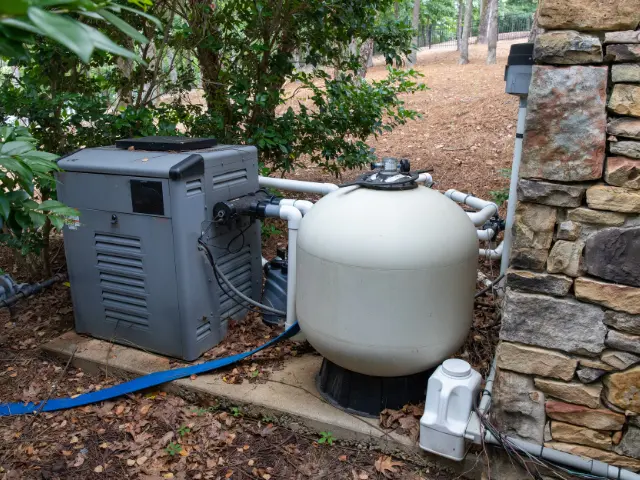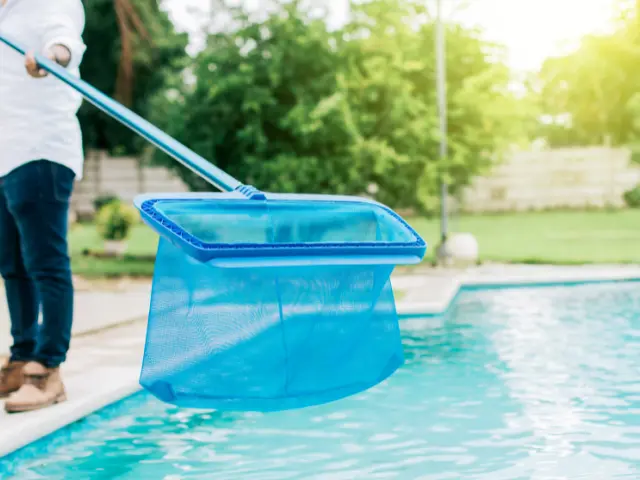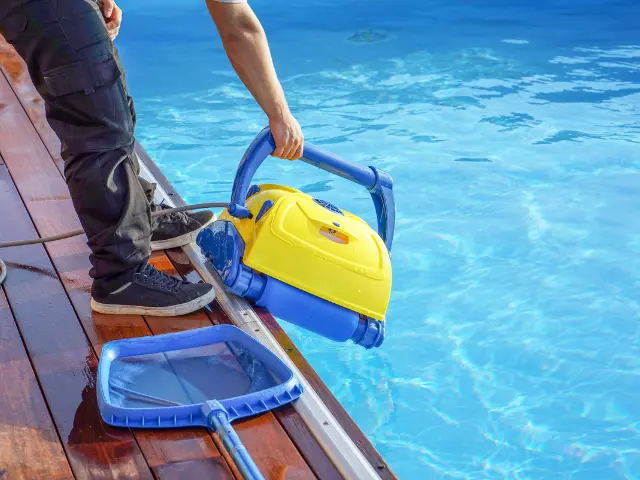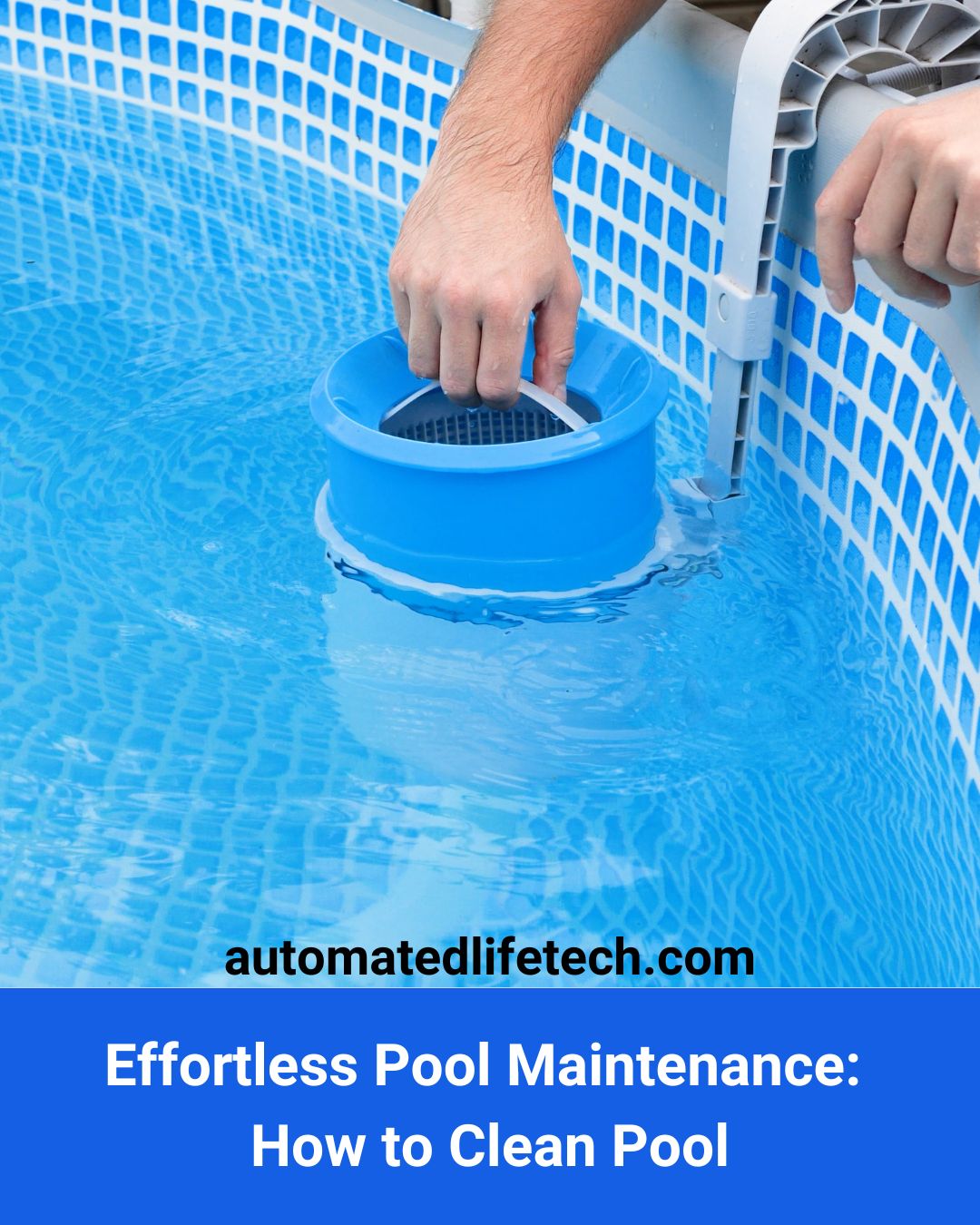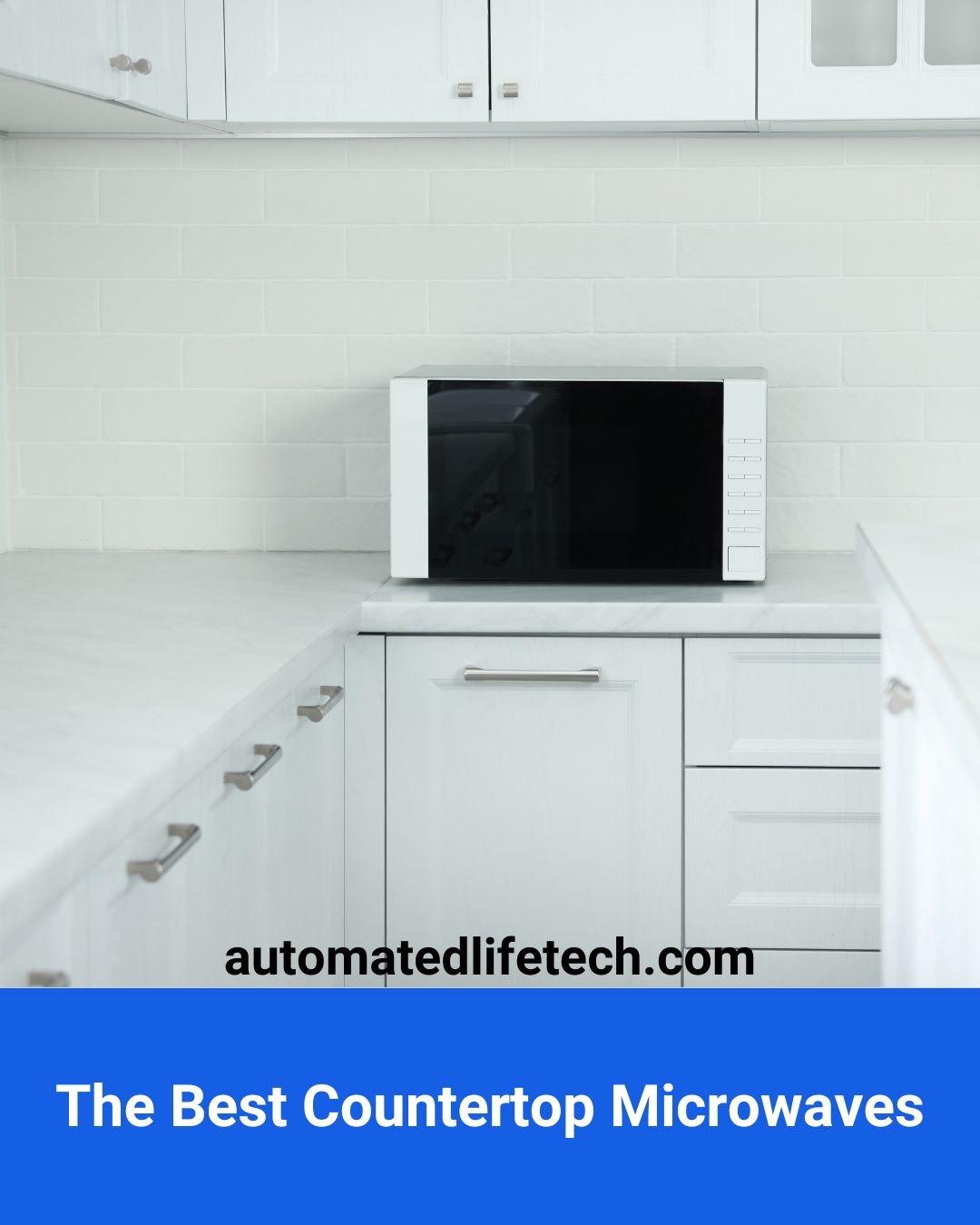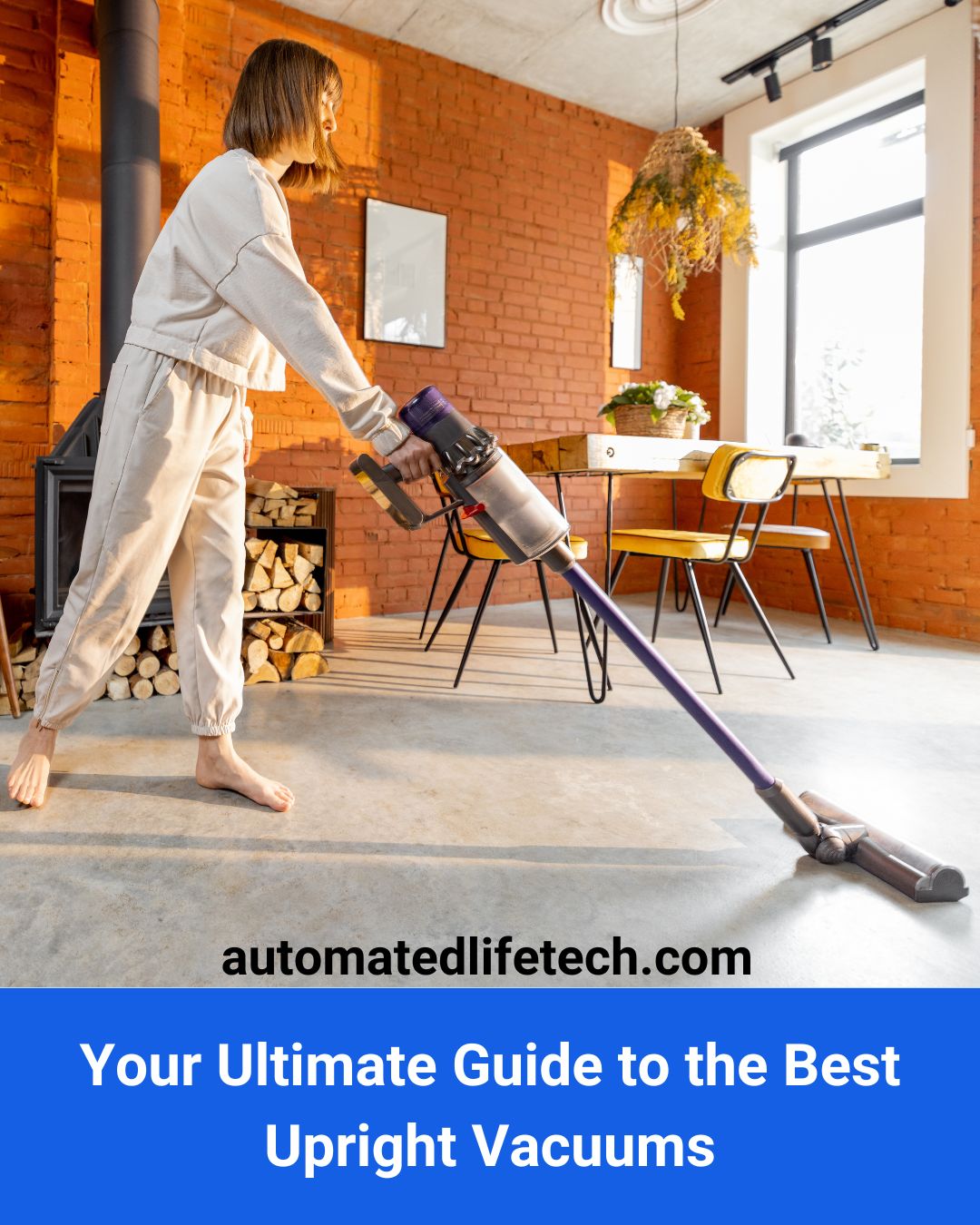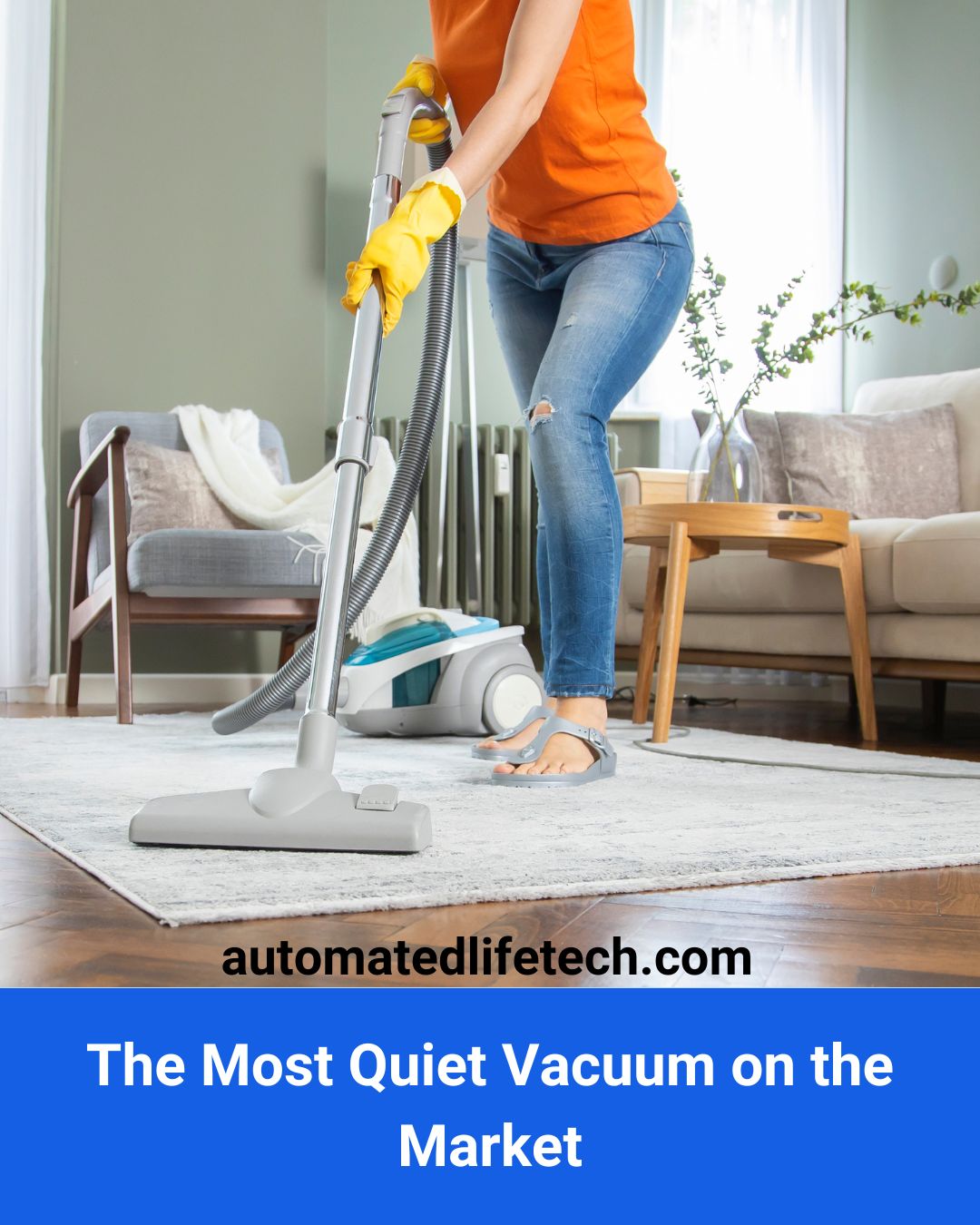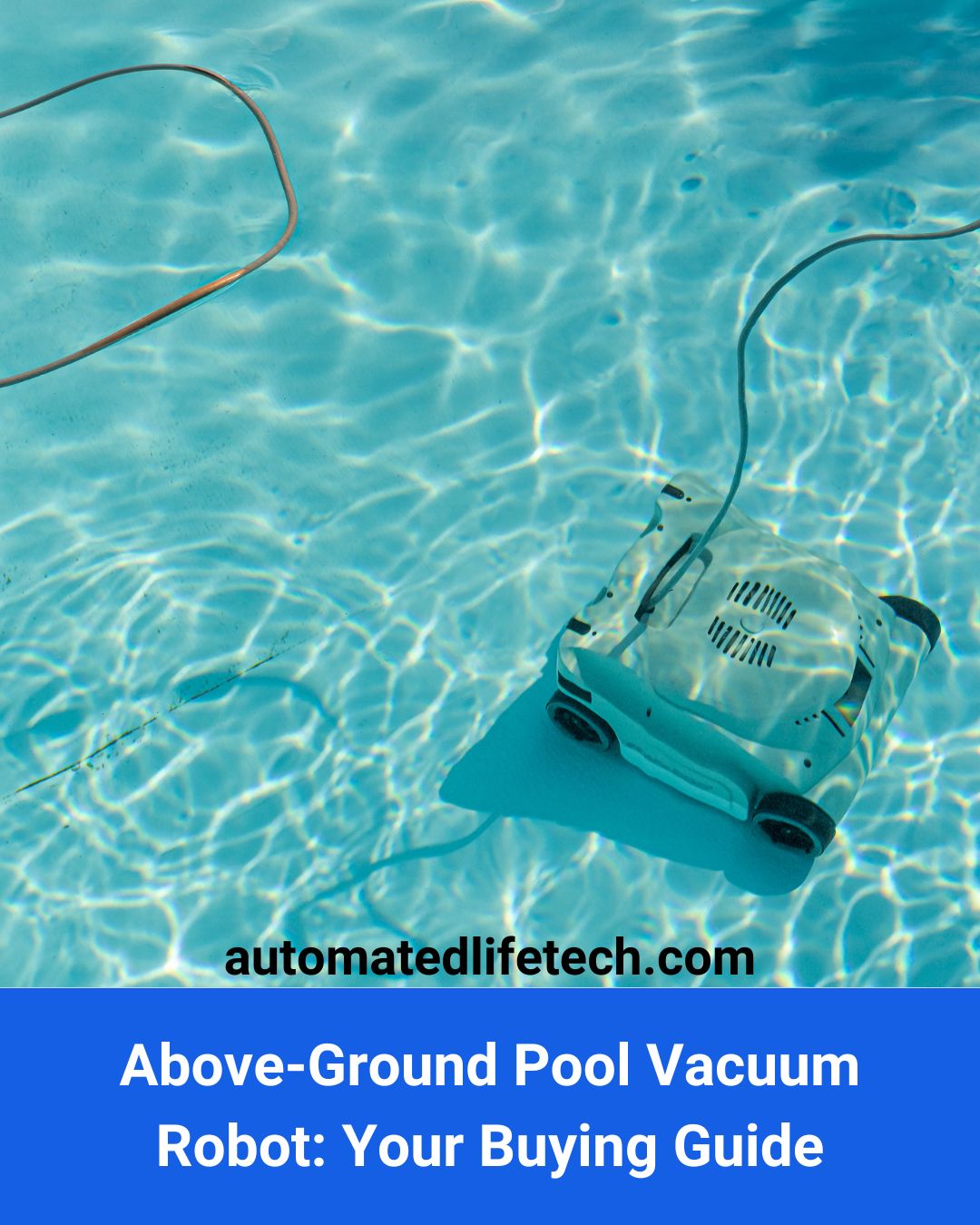Cleaning a swimming pool requires several steps to ensure that the pool water and the pool itself are safe for swimmers. It also involves giving your pool’s components a thorough inspection that will help in securing the pool’s longevity. In this blog, we’ll talk about the most common steps and some times on how to effectively clean a residential pool.
Read here to find out about above ground pool vacuum robot.
Read here to find out about the best robot mop and vacuum.
Tools and Materials Required to Clean Pool
The tools and equipment you need for pool cleaning may vary depending on the approach you prefer to take. But in general, these are the maintenance materials that deserve a spot on anyone’s pool cleaning checklist.
Tile Brush
Tile brush is used to scrub and clean tiles along the waterline and other tiled surfaces in your swimming pool. These brushes can eliminate dirt, algae, grime and scale buildup, especially if paired with the right cleaning solution.
Tile Soap
A tile soap or cleaner is a chemical mixture specifically designed for tiled surfaces in and around your pool. They are often formulated to break down calcium buildup, mineral deposits and other debris. You should use all tile soaps with caution and refer to the manufacturer’s recommendation or instructions to achieve optimal results.
Spray Bottle for Grout
You can use a generic spray bottle for cleaning grout in a swimming pool as long as it has a nozzle that will allow the application of grout cleaner evenly and in a controlled manner.
Telescopic Pole
You can and should attach your tile brush to a telescopic pole to extend your reach and make your movements safer and more convenient. It also gives you leverage when scrubbing stubborn dirt marks or hard to reach areas in your swimming pool. Tile brushes are typically already designed to attach to a standard telescopic pole.
Wall Brush
Wall brush works best when cleaning vertical surfaces. The brush head can be made of nylon, poly bristles or a combination of other materials. Like the standard tile brush, most wall brushes are designed to be attached to a telescopic pole for ease of use.
Vacuum Head
The vacuum head is the primary tool used to clean the pool’s surface. This will be attached to a vacuum hose and telescopic pole to give you more control when cleaning the pool.
Vacuum Hose
The vacuum hose should be long enough to reach all corners of your swimming pool as it connects the vacuum head to the pool’s skimmer or a designated vacuum port.
Garden Hose with High-pressure Nozzle
A garden hose with a high-pressure nozzle is most effective when cleaning the walkways, deck and even a few of your pool equipment. The high-pressure nozzle is important as it allows you to adjust the spray patterns and water pressure from the hose using the right settings.
Leaf Net
Also referred to as a leaf rake or skimmer, a leaf net is primarily needed to remove fallen leaves and other floating debris on the surface of your pool. The leaf net can be attached to a telescopic pool to extend its reach.
Pollen Net
The pollen net is specialized for removing fine debris like pollen or other allergens and debris from the pool’s surface. You can use the telescopic pole to extend the reach of a pollen net.
Water Testing Equipment
The water testing equipment monitors your pool’s water chemistry. There is a variety of testing equipment available to measure different water conditions. For example, a chlorine testing solution specifically measures chlorine levels in the water. Meanwhile, a TDS (total dissolved solids) meter will account for the concentration of dissolved solids in the pool, which can impact water quality.
Other common testing equipment for swimming pool maintenance and measuring pool chemicals include digital water testers, pool water test kits or strips, alkalinity and pH testing solutions and more.
Buckets for chemicals
Using buckets for chemicals is a common practice in swimming pool maintenance. Rubber and polyethylene buckets often used for this purpose since they are resistant to many pool chemicals. For better management, you can add label to your buckets and reserve one for each chemical.
Chlorine tablets and other chemicals
Chlorine tablets and other chemicals are used to maintain and sanitize the water in your swimming pool.
How to Clean Your Pool – Step by Step Guide
Skim Of Leaves and Debris
Swimming pools with a clean surface naturally have better quality and appeal, so don’t take a lackluster approach when cleaning the debris off of the water.
- Have the right equipment
Gather your pool equipment before you start. Label your chemical buckets and set them aside properly. Ensure that you have a pool net brush, telescopic pole, vacuum, vacuum hose and other pool equipment ready. For cleaning the surface, have your leaf skimmer and collection bag on the ready.
- Use a leaf skimmer to skim the surface of the pool
When using the leaf net or skimmer, move it slowly across the surface, then angle the net slightly downward to trap and collect the debris.
Brush Sediment from Pool Walls
Before brushing, ensure that the pool’s circulation system is running. This can help disperse loosened contaminants for easy removal.
When using the pool brush, start at the top of the wall and work your way down. Letting the debris and sediment fall and pile up at the bottom of the pool will make it easier to vacuum later.
Vacuum the Pool
Regular vacuuming, in addition to brushing and skimming, is essential for keeping your swimming pool clean and hygienic. Depending on your preference, you can vacuum the pool manually or with a above-ground pool vacuum robot.
- Above ground pool vacuum robot
Robotic pool cleaners offer a convenient and efficient method to keep your swimming pool in tip-top shape with minimal input from your end. For example, robotic pool vacuums that run on jet propulsion use water to move around and clean, while units that use suction power just need to be connected to the pool pump and filtration system. Both types of pool cleaners use advanced navigation technology to move around unassisted.
Read here for above ground pool vacuum robot.
- Manual pool vacuum
Using a pool vacuum manually remains an effective and cost-efficient way to clean the pool floor and walls of your swimming pool by taking control of the vacuum head and telescopic pole. Some people find it to be a chore, while others take it as a break or form of meditation.
Keep Your Pump Running
Keeping your pool pump running is essential to proper pool maintenance. Commonly, it’s recommended to run the pump for 8 to 12 hours during swimming season. This helps ensure that the pool filter system is in good condition and that chemicals are evenly distributed.
Check Filter and Backwash As Needed
You can easily check the condition of the pool filter via the pressure gauge that reflects that filter’s operating pressure. When it indicates 8 to 10 psi above the normal operating pressure, it’s a sign that the filter is starting to get clogged and requires cleaning.
Test Pool Water and Add Chemicals
Finally, you shouldn’t forget to test the pool chemistry and water quality.
- Test the water’s pH levels
Testing the pool’s water balance and pH levels is relatively easy and straightforward. On standard, you can use either test strips, a digital tester or liquid reagents to measure the pH level of your pool water. For your convenience, simply get a clean container and collect a sample of pool water that you can use for testing.
- Add sanitizing chlorine tablets
Most residential pools may only need chlorine tablets once each week to keep the pool sanitized. However, do consider factors such as the strength of the chlorine tablet, the size of your swimming pool and weather conditions in order to get a more suitable timeline for replenishing chlorine. You can then use a floating tablet dispenser that will help dissolve gradually over a period of time.
- Shock your pool
A pool shock treatment means adding a large dose of chlorine to the water to rapidly and effectively purge contaminants. This is usually done at the beginning of the swimming season. You may refer to the manufacturer’s instructions to get the ideal dosage for shocking your pool. When it comes to timing, it’s best to shock the pool at night to avoid sunlight, and when rain isn’t forecasted or imminent in the next 24 hours after the pool shock.
The Importance of a Clean Pool
Pool cleaning must be done regularly in order to maintain your property and observe a healthy environment that all swimmers can enjoy. Whether you’re doing the deed manually or scheduling it for professional cleaners, the important thing is having a set cycle based on your pool’s size and needs. A clean pool isn’t only visually appealing, but an essential requirement for environment and home safety.
Read here to find out more about commercial robot vacuum.



